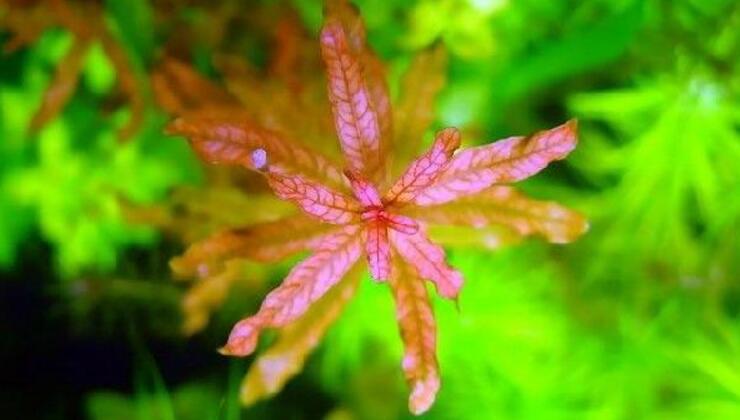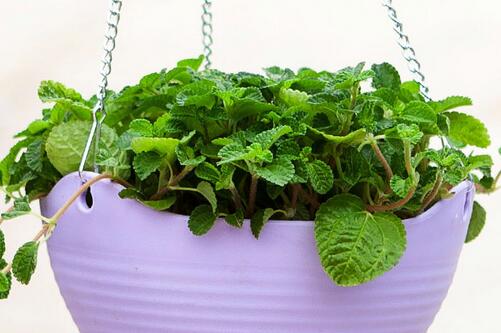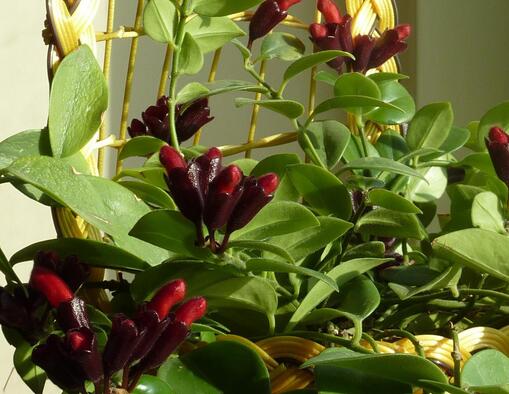Is the leopard-print lilac good? it is difficult to feed and plant.
Leopard cloves, a pretty name. Leopard clove is a kind of stemmed aquatic plant, which is one of the most difficult aquatic plants to cultivate. It is an improved variety of water clove. Is it good to feed leopard cloves?

Description of Leopard Cloves:
Common name: Leopard clove
Scientific name: Ludwigia inclinata
Family: Onagraceae
Distribution: South America
Illumination: 2000Lux
Water temperature: 16-16℃
Location: middle and back view grass
Hardness: 2-12DH
P H:6.0-7.2
Good food for you:
Leopard cloves are dicotyledonous plants and water plants. Leopard clove water leaves for long ovate, leaf order opposite, veins obvious, will flower, yellow, yellow flowers from leaf axils, large and obvious. Leaf color is green, brown or brown are possible, mainly with different seasons and different.
When leopard clove is grass in water, the texture of the leaves is obvious and clear, which is also the origin of the name "leopard clove", and because the leaves are slender long oval, some like willow leaves, so it is also called "willow leaf water clove". Leaf texture is very thin, with full elegance, looks graceful, elegant and beautiful shape and sense of value, always let people want to cultivate the impulse. However, the cultivation of leopard clove is very difficult, so it is not suitable for novice grass friends to cultivate. In particular, it is extremely difficult to grow to the top ten state in the aquatic tank, which may require strong light intensity, and the concentration of iron fertilizer and trace elements in the fertilizer should be high.
What kind of medicine is used for aphids?
Leopard arrowroot, this is a plant, is super many people like, this leopard arrowroot breeding method is what kind of? What drugs are used for aphids:
The breeding method of leopard arrowroot:
1. Soil: in the cultivation of leopard arrowroot, to choose good ventilation, good drainage, fertile, loose soil. The soil can be sterilized before planting.
2. Light: indoor cultivation of potted leopard arrowroot, to select permeability, light better position placed, this is conducive to the growth of leopard arrowroot prosperity, thus improving the ornamental value; in addition to summer, the other three seasons to pay more attention to its direction of sunlight.
3. Moisture: Leopard arrowroot likes soil moisture, but there can be no waterlogging and ponding phenomenon, which will lead to rotten roots of leopard arrowroot; in summer, more water than usual.
4. Temperature: It is more afraid of cold, the best growth temperature between 18 degrees and 30 degrees, the lowest temperature in winter can not be lower than 10 degrees, so as to maintain its normal winter.
5. Fertilizer: during the growth period of leopard arrowroot, fertilizer should be applied once every 2 days or so. Nitrogen fertilizer is the main fertilizer.
6. Prevention of pest damage: more observation, more water spray to the leaves, can reduce pest damage, can be sprayed with fungicides.
What drugs are used for aphids:
The damage rate of new shoots reached 25%, so spraying should be done immediately. Commonly used agents are chloramidine, dimethoate, buthiokerwei and so on. Attention should be paid to protecting ladybugs, large laceflies, aphids, aphids, etc., cutting off overwintering eggs and reducing the number of pests.
The breeding method of leopard arrowroot is introduced here, pay attention to aphids.
Is it a good way to grow a potato or a bad way to grow a potato?
Leopard arrowroot is also known as leopard arrowroot, white vein arrowroot, prayer flower, green vein arrowroot, etc. It is a perennial green herb belonging to arrowroot genus of arrowroot family. Its plant often belongs to creeping growth, and the height of the plant is about 10cm-30cm. The distance between nodes is very short, showing multi-branched state, and the stem is creeping growth. Its leaves are relatively wide rectangular round shape, length is generally 8cm-15cm, and width is 7cm-10cm, while the base position is heart-shaped, and the front end is pointed convex shape, color is light green, very shiny. 6-8 pairs grow at the lateral vein position, two rows of pinnate stripes are arranged between the veins, the color is taupe, it will become dark green in the process of growth, just like rabbit footprints, and the quilt is green, the leaves are obovate, the length is 7-10cm, and the width is 4- 6 cm, the two sides of the main vein are black green stripes alternately arranged, and the newly grown leaves are white green, looking very elegant. Let's take a look at the pictures of leopard arrowroot and the cultivation methods of leopard arrowroot. Is leopard arrowroot a shade or a yang plant? Leopard arrowroot is a kind of foliage plant. It is native to some tropical regions such as America, Asia, Africa, etc. It is very easy to cultivate. It is mainly European from round leaf arrowroot screening culture, it likes to grow in sunny, high humidity, semi-shady environment. It belongs to a kind of plant that is afraid of cold and strong light. The temperature suitable for growth is 18-30 degrees Celsius. The humidity requirement for the growth environment is relatively high. However, it is most suitable for planting in loose, fertile, good drainage and rich organic matter acid moldy soil and peat soil. [Leopard arrowroot propagation method] Leopard arrowroot mainly used to reproduce the method of plant division, its reproductive ability is very strong, suitable for reproduction in all seasons of the year. It is best to plant with loose, breathable and fertile soil. Don't water too much in the process of cultivation, otherwise it will cause the situation of pot water and rotten roots. Generally adopted is sub-root propagation, usually in the spring of each year when the pot turned. 1. Soil: When breeding leopard arrowroot, it is best to plant it in loose, fertile, well drained and well ventilated soil. Chlorothalonil is used to disinfect the soil, and then the plant is cultivated. 2. Light: If potted leopard arrowroot is placed indoors, it can be placed in an environment with better light and better permeability, so that leopard arrowroot will grow more luxuriantly. If placed in too much shade, its growth trend will be weak, and the leaves will fade, in summer to avoid direct light phenomenon, otherwise there will be leaves withered curly situation, thus reducing the ornamental value. In spring, autumn and winter, there is more photosynthesis in the morning and evening. 3. Moisture: In the process of leopard potato growth, to keep the pot soil moist, but can not cause the situation of ponding, otherwise there will be rotten roots, in the summer when some water irrigation. 4. Temperature: The most suitable temperature for leopard arrowroot is 18-22 degrees Celsius, and the temperature needs to be kept above 10 degrees Celsius during the winter season. 5. Fertilizer: Leopard arrowroot likes to grow in fertile soil, and needs to be irrigated 1-2 times a day in the season of vigorous growth. The fertilizer applied is preferably nitrogen fertilizer as the main compound fertilizer. 6. Prevention of pests and diseases: leopard arrowroot encountered pests are not particularly many, mainly scale insects, whiteflies, can be used to effectively spray iminothion and omethoate for control. Leopard arrowroot originated in America, Asia, Africa and other regions, it likes to grow in warm, humid, relatively cool environment, suitable for growth temperature is 18-22 degrees Celsius, and in winter temperature should be above 10 degrees Celsius, can safely winter. The leopard arrowroot plant is relatively short, generally with relatively neutral or tall plants together with breeding, breeding in the window, flower rack, desk and other positions, giving a unique elegance, can also be placed in the office or indoor as a hanging basin hanging plant ornamental.
More information about how to grow Chinese cabbage, how to grow Chinese cabbage, how to grow Chinese maple leaves, and how to grow Chinese maple leaves.
- Prev

How to prune, cultivate and maintain drug addicts need to know
Drug addicts can withstand low temperatures in winter and high temperatures in summer. It originated in the southern bank of the Mediterranean and can be found in Europe, Central Asia, North America and Asia, mainly in France. Then how to trim the drug grass? The following editor brings you the details. How to prune drug weeds: drug weeds grow quickly
- Next

Is lipstick hanging orchid poisonous? culture methods and matters needing attention
Carthamus tinctorius is an evergreen vine with epiphytic nature and is often planted in a hanging basket. Leaves opposite, leaf blade ovate, elliptic or Obovate, leathery and slightly fleshy, leaf surface dark green, leaf back light green. Flowers axillary or apically clustered. Flowers paired at the tip of branches, shortly pedicellate, Corolla Chinese red to red-orange, calyx tubular
Related
- Fuxing push coffee new agricultural production and marketing class: lack of small-scale processing plants
- Jujube rice field leisure farm deep ploughing Yilan for five years to create a space for organic food and play
- Nongyu Farm-A trial of organic papaya for brave women with advanced technology
- Four points for attention in the prevention and control of diseases and insect pests of edible fungi
- How to add nutrient solution to Edible Fungi
- Is there any good way to control edible fungus mites?
- Open Inoculation Technology of Edible Fungi
- Is there any clever way to use fertilizer for edible fungus in winter?
- What agents are used to kill the pathogens of edible fungi in the mushroom shed?
- Rapid drying of Edible Fungi

